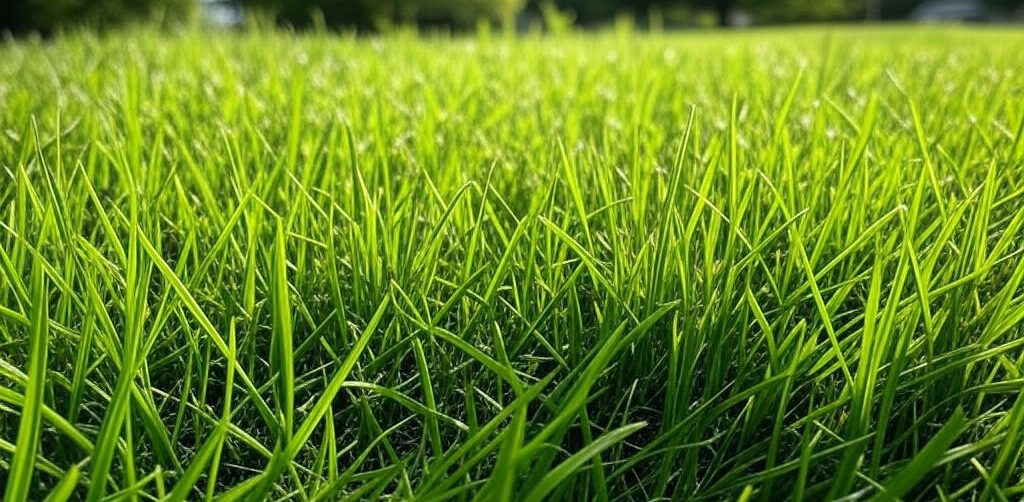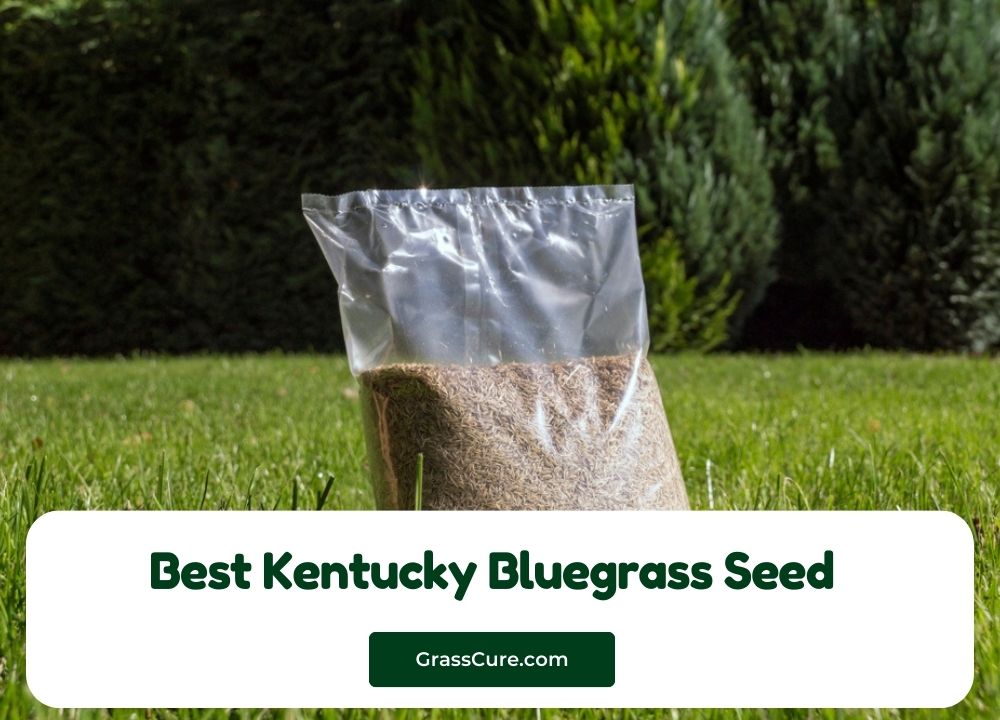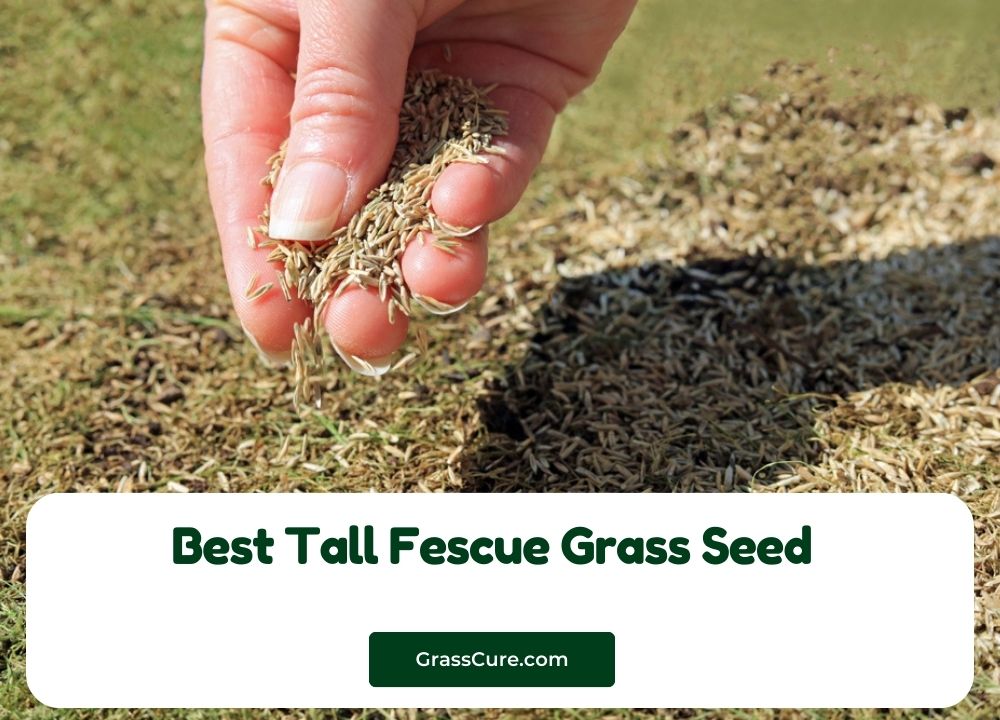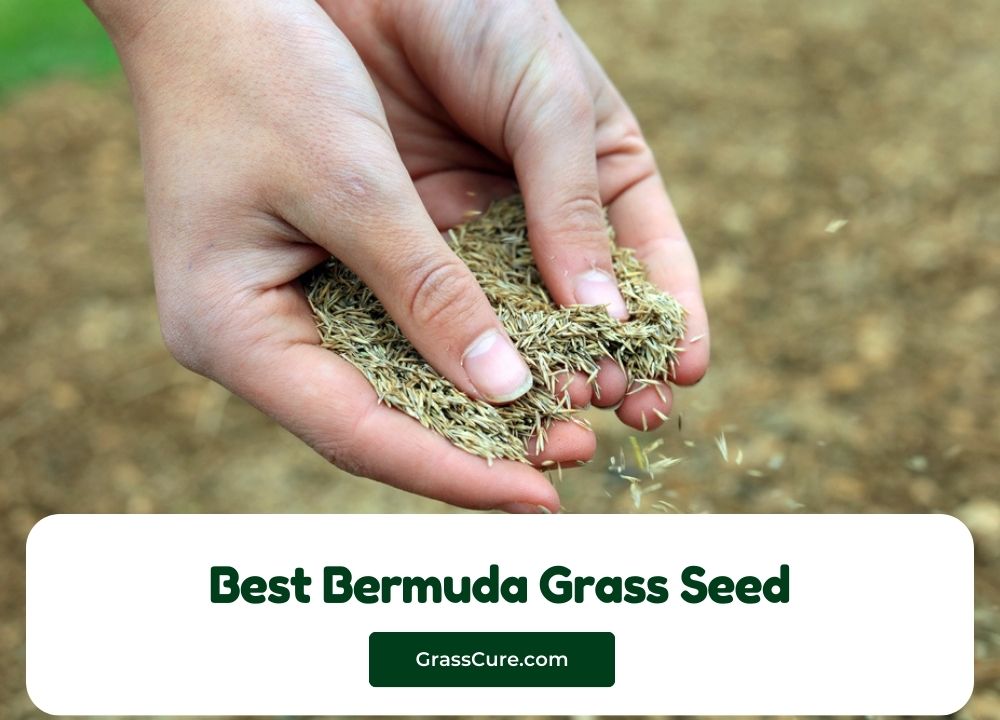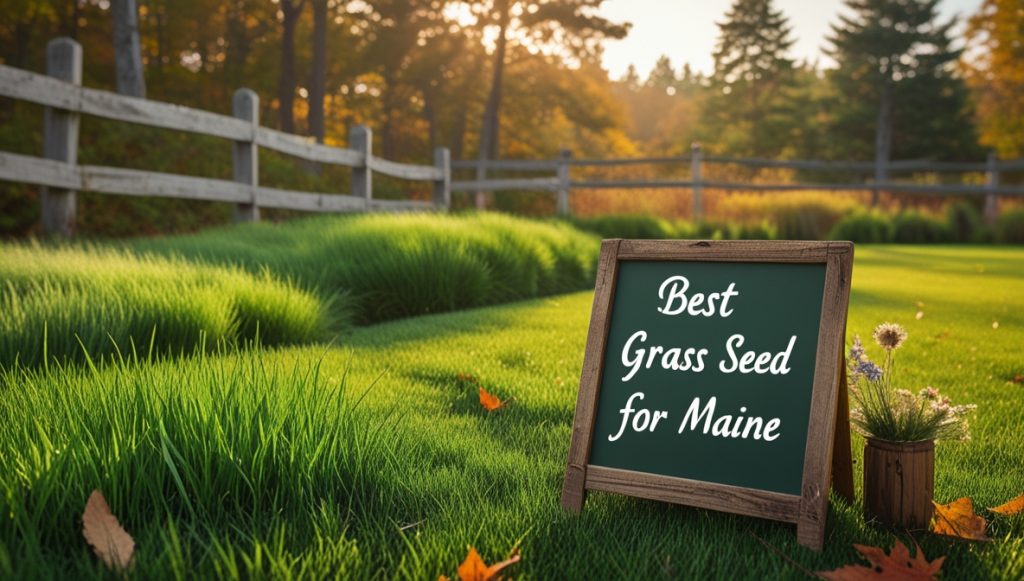Creating a lush, green lawn starts with choosing the right grass seed. With countless options available, homeowners often struggle to pick the perfect variety for their specific needs. This guide cuts through the confusion to help you select the best grass seed for lawn.
We’ve tested and analyzed the top grass seed products on the market to bring you honest, practical recommendations that consider climate compatibility, durability, drought resistance, and overall performance. From cool-season Kentucky Bluegrass to hardy Tall Fescue varieties, we cover everything you need to know before making your purchase.
Let’s dive into the world of grass seed to transform your patchy yard into the envy of the neighborhood.
Contents
- Understanding Different Types of Grass Seed
- Key Factors When Choosing Grass Seed
- Top Grass Seed Products Reviewed
- How to Choose the Right Grass Seed for Your Specific Needs
- When and How to Plant Grass Seed for Best Results
- Common Grass Seed Problems and Solutions
- Maintaining Your New Lawn for Long-Term Success
- Conclusion: Selecting Your Perfect Grass Seed
Understanding Different Types of Grass Seed
Before jumping into specific products, it’s crucial to understand the main types of grass seed and which ones work best in different conditions.
Cool-Season Grasses
Cool-season grasses thrive in areas with cold winters and moderate summers, typically in the northern United States and Canada. They grow most actively during spring and fall when temperatures range between 60-75°F.
Popular cool-season grasses include:
- Kentucky Bluegrass: Known for its rich color and self-healing abilities
- Tall Fescue: Drought-resistant with deep root systems
- Perennial Ryegrass: Quick to germinate and establish
- Fine Fescue: Tolerates shade and requires less maintenance
Warm-Season Grasses
Warm-season grasses perform best in southern regions with hot summers and mild winters. They grow most actively when temperatures reach 80-95°F and often go dormant (turn brown) during cooler months.
Common warm-season varieties include:
- Bermuda Grass: Heat-tolerant with excellent recovery ability
- Zoysia: Dense growth pattern that crowds out weeds
- St. Augustine: Good shade tolerance but less cold-hardy
- Centipede: Low-maintenance option for acidic soils
Grass Seed Blends and Mixes
Many successful lawns utilize seed blends that combine different grass types to maximize strengths and minimize weaknesses. Blends might include:
- Sun and shade mixes: Combining shade-tolerant varieties with sun-loving types
- High-traffic blends: Including durable grasses that recover quickly from wear
- Regional mixes: Specifically formulated for your climate zone
Key Factors When Choosing Grass Seed
Finding the perfect grass seed depends on several crucial factors:
Climate Compatibility
The most important factor is matching your grass seed to your climate zone. Planting Kentucky Bluegrass in Florida or Bermuda grass in Minnesota will lead to disappointing results.
Sun Exposure
Assess how much sun your lawn receives daily. Some areas might get full sun while others remain shaded by trees or buildings. Many quality seed blends address this variation with mixed varieties.
Soil Conditions
Your soil type affects which grasses will thrive. Test your soil pH and structure to determine if amendments are needed before seeding.
Traffic Patterns
Areas with high foot traffic need durable, quick-recovering grass varieties. Consider how your lawn will be used—for children playing, pets running, or mainly visual enjoyment.
Maintenance Level
Some grass types demand frequent mowing, fertilization, and watering, while others are relatively low-maintenance. Be realistic about how much time you’ll dedicate to lawn care.
Drought Resistance
Water conservation is increasingly important. Drought-resistant varieties can maintain color and health with less irrigation.
Top Grass Seed Products Reviewed
Now let’s examine five top-performing grass seeds currently available on the market, highlighting their strengths, weaknesses, and ideal use cases.
1. Scotts Turf Builder Grass Seed Kentucky Bluegrass Mix
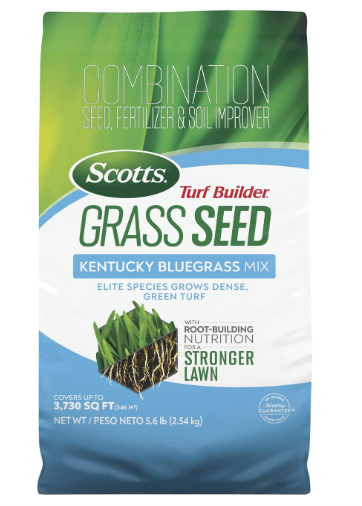
Weight: 5.6 lbs Best For: Northern lawns with full sun exposure
This premium Kentucky Bluegrass mix includes fertilizer and soil improver components, creating an all-in-one solution for establishing a classic, carpet-like lawn.
Pros:
- Creates thick, dark green turf with excellent self-repair capabilities
- Contains WaterSmart PLUS coating that helps seeds retain moisture
- Added fertilizer jumpstarts growth without separate application
- Soil improvers enhance seed-to-soil contact for better germination rates
- Establishes a lawn that holds up well against moderate foot traffic
Cons:
- Higher price point than basic seed options
- Requires consistent watering during establishment
- Not ideal for heavily shaded areas
- Takes longer to germinate than ryegrass varieties (14-21 days)
- Requires more maintenance once established
Real-World Performance: The Scotts Kentucky Bluegrass Mix performs exceptionally well in northern climates with full sun exposure. Users report dense, carpet-like growth after proper establishment, with the distinctive blue-green color that makes Kentucky Bluegrass so desirable. The self-repairing nature helps maintain lawn integrity over time.
This seed works best when planted in early fall or spring and benefits from regular watering during establishment. The included fertilizer eliminates the need for separate starter fertilizer, simplifying the process for homeowners.
2. Pennington Contractors Grass Seed Northern Mix
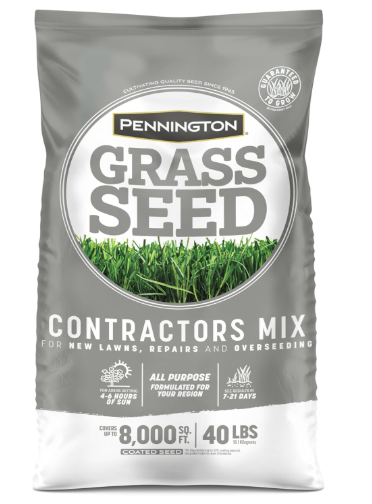
Weight: 40 lbs Best For: Large northern properties and professional landscaping projects
This contractor-grade seed blend provides excellent coverage for large properties at a competitive price point. The mix contains multiple grass varieties suitable for northern climates.
Pros:
- Excellent value for large-scale seeding projects
- Contains fast-germinating varieties for quick establishment
- Blend of grasses creates resilience against various stresses
- Performs reliably across different northern soil types
- Creates a lawn with good wear tolerance
Cons:
- Lacks detailed information about specific varieties in the mix
- No included fertilizer or soil amendments
- Less refined appearance than premium single-variety seeds
- Germination rates can vary throughout the lawn
- Bulk packaging can be challenging for small touch-up jobs
Real-World Performance: Landscapers and homeowners with large properties praise this seed mix for its reliability and cost-effectiveness. The blend establishes quickly due to the inclusion of ryegrass varieties, while slower-growing components create long-term durability.
Users report good results when following proper site preparation techniques, including soil testing and amendment. The mix performs consistently across various sun exposures, though heavily shaded areas may need supplemental overseeding with shade-specific varieties.
3. Jonathan Green Black Beauty Ultra Grass Seed

Weight: 7 lbs Best For: Premium lawns with diverse sun conditions
This premium cool-season mix boasts elite grass varieties selected for their dark green color, disease resistance, and adaptability to various growing conditions.
Pros:
- Rich, deep green color resembling golf course turf
- Contains naturally insect-resistant varieties
- Good drought tolerance once established
- Performs well in both sun and partial shade
- Waxy coating on leaf blades helps conserve moisture
Cons:
- Premium price point
- Requires proper soil preparation for best results
- Takes longer to fully establish than basic contractor mixes
- May need more consistent watering during establishment
- Not ideal for heavily trafficked utility areas
Real-World Performance: The Black Beauty Ultra mix consistently receives high marks from homeowners seeking a premium lawn appearance. The proprietary grass varieties develop a distinctive dark green color that stands out among neighborhood lawns.
The mix performs particularly well in transitional areas that receive varying amounts of sunlight throughout the day. The included varieties also demonstrate good resistance to common lawn diseases, reducing the need for fungicide treatments.
Users report that while establishment takes patience, the resulting lawn quality justifies the premium price point. The waxy coating on leaf blades contributes to improved drought resistance compared to other cool-season options.
4. Pennington Kentucky 31 Tall Fescue Penkoted Grass Seed
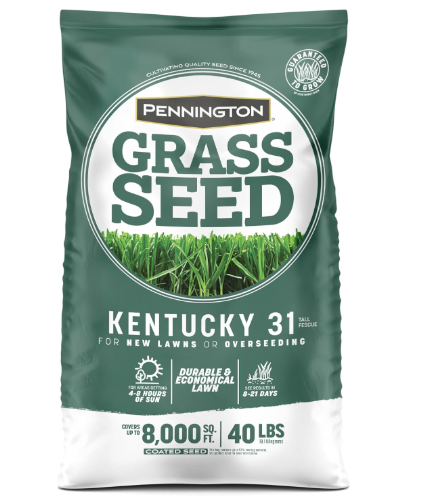
Weight: 40 lbs Best For: Low-maintenance lawns in challenging conditions
This workhorse tall fescue variety offers exceptional durability and adaptability at an economical price point. The “Penkoted” treatment helps protect seeds during the crucial germination period.
Pros:
- Outstanding drought tolerance once established
- Deep root system improves soil structure
- Performs in both sun and moderate shade
- Requires less fertilizer than Kentucky Bluegrass
- Excellent erosion control on slopes
- Protective seed coating improves germination rates
Cons:
- Coarser texture than premium bluegrass or fine fescue
- Slower to establish than ryegrass varieties
- Less self-repairing than Kentucky Bluegrass
- May require occasional overseeding in high-traffic areas
- Can appear less uniform than single-cultivar lawns
Real-World Performance: Kentucky 31 Tall Fescue has earned its reputation as a reliable performer in challenging conditions. Homeowners with clay soils or drought-prone areas report particularly good results, as the deep root system (up to 2-3 feet) accesses moisture unavailable to shallow-rooted grasses.
The Penkoted treatment protects seeds from fungal issues during germination, improving overall success rates. While not the most refined-looking turf when compared to premium bluegrass varieties, K31 offers unmatched durability for areas where functionality trumps appearance.
Users with children and pets appreciate this variety’s ability to withstand play and traffic while requiring less irrigation than thirstier grass types.
5. Pennington The Rebels Tall Fescue Grass Seed Mix

Weight: 7 lbs Best For: Improved tall fescue lawns with better texture
This enhanced tall fescue blend improves upon traditional K31 with finer-bladed varieties that maintain drought tolerance while providing a more refined appearance.
Pros:
- Finer leaf texture than standard tall fescue
- Maintains excellent drought resistance
- Good tolerance for both sun and shade conditions
- Establishes relatively quickly for a tall fescue
- Requires less water than bluegrass varieties
- Contains multiple complementary tall fescue cultivars
Cons:
- More expensive than basic K31 tall fescue
- Slightly less wear-resistant than traditional K31
- Needs regular mowing to maintain best appearance
- Requires proper soil preparation for optimal results
- Limited self-repairing capability
Real-World Performance: The Rebels mix represents the evolution of tall fescue, maintaining the drought tolerance and durability while addressing the coarse texture that some homeowners dislike about traditional varieties.
Users report that this mix establishes more reliably than single-variety tall fescue, with the diversity of cultivars providing insurance against specific disease pressures or micro-climate variations within the lawn.
The improved texture creates a more visually appealing lawn without sacrificing the practical benefits of tall fescue. The mix performs particularly well in transition zones where both heat stress and winter cold challenge less adaptable varieties.
How to Choose the Right Grass Seed for Your Specific Needs
Now that we’ve reviewed top products, let’s help you narrow down your options based on common lawn scenarios:
For Northern Lawns with Full Sun
Best Option: Scotts Turf Builder Kentucky Bluegrass Mix
Kentucky Bluegrass creates the classic deep green carpet many northern homeowners desire. The Scotts mix includes helpful additives that improve germination and establishment. Plan to seed in early fall or spring for best results, and prepare for regular maintenance including fertilization 4-5 times annually.
For Mixed Sun and Shade Areas
Best Option: Jonathan Green Black Beauty Ultra
The diverse varieties in this mix perform well across varying light conditions. The waxy coating on leaf blades helps conserve moisture in sunny spots while the included fine fescues thrive in shadier areas. This versatility makes it ideal for yards with trees or buildings creating partial shade.
For Low-Maintenance, Drought-Resistant Lawns
Best Option: Pennington Kentucky 31 Tall Fescue
If you’re seeking a functional lawn that requires minimal irrigation and fertilizer, K31 delivers outstanding performance. Its deep roots access soil moisture even during dry periods, and its natural toughness stands up to use without intensive care regimens. The coarser texture trades refinement for practicality.
For Large Properties and New Construction
Best Option: Pennington Contractors Northern Mix
When establishing large areas quickly and economically, this contractor-grade mix offers reliable performance at scale. The blend of varieties provides insurance against variable soil conditions across big properties, while the inclusion of quick-germinating species helps prevent erosion during establishment.
For Improving Tall Fescue Lawns
Best Option: Pennington The Rebels Tall Fescue Mix
Homeowners who appreciate tall fescue’s practicality but desire more refined appearance should choose this improved blend. The finer-bladed varieties maintain drought tolerance while creating a more aesthetically pleasing lawn. This mix works particularly well in transition zones between northern and southern grass regions.
When and How to Plant Grass Seed for Best Results
Timing and technique dramatically impact seeding success. Follow these guidelines based on your grass type:
Cool-Season Grasses
Ideal Planting Times:
- Primary: Early fall (August-September in most northern regions)
- Secondary: Early spring (April-May in most northern regions)
Fall planting allows seeds to establish before winter dormancy and continue strong growth the following spring. Spring planting works but may face more weed competition and summer heat stress before full establishment.
Warm-Season Grasses
Ideal Planting Times:
- Primary: Late spring to early summer (May-June in southern regions)
- Secondary: Early fall in southernmost areas only
Warm-season grasses need soil temperatures above 65°F for proper germination. Planting too early results in slow, spotty growth, while planting too late gives insufficient time to establish before winter dormancy.
Essential Planting Steps
- Test and prepare soil: Test pH and amend if necessary (most grasses prefer 6.0-7.0 pH)
- Remove debris and loosen soil: Rake thoroughly and break up compaction
- Apply starter fertilizer: Choose a high-phosphorus formulation unless your seed already contains fertilizer
- Spread seed evenly: Use a broadcast spreader for large areas or hand-seeding for small patches
- Ensure seed-to-soil contact: Lightly rake or roll after seeding
- Apply thin mulch layer: Use straw or seed covers on slopes or windy sites
- Water properly: Keep soil consistently moist (not soggy) until germination
Common Grass Seed Problems and Solutions
Even with proper selection and planting techniques, challenges can arise. Here’s how to address common issues:
Patchy Germination
Possible Causes:
- Inconsistent watering
- Poor seed-to-soil contact
- Soil compaction
- Seed washing away on slopes
Solutions:
- Maintain consistent moisture with light, frequent watering
- Gently rake areas with poor germination to improve seed-soil contact
- Aerate compacted areas before reseeding
- Use erosion control products on slopes
Bird Damage
Possible Causes:
- Seeds exposed on soil surface
- Insufficient covering
- Large areas of visible seed
Solutions:
- Apply thin layer of straw mulch
- Consider bird repellent products
- Plant during seasons with fewer bird feeding activities
- Water immediately after seeding to help seeds settle into soil
Weed Competition
Possible Causes:
- Dormant weed seeds in soil
- Insufficient pre-planting weed control
- Overwatering new seedings
Solutions:
- Remove weeds manually while they’re small
- Avoid disturbing soil deeply during planting
- Wait until grass is established before applying herbicides
- Maintain proper mowing height once grass establishes
Fungal Disease
Possible Causes:
- Overwatering
- Poor air circulation
- Planting in unfavorable seasons
Solutions:
- Water in morning to allow foliage to dry
- Reduce watering frequency but maintain adequate soil moisture
- Consider fungicide treatments if problem persists
- Choose disease-resistant seed varieties
Maintaining Your New Lawn for Long-Term Success
Once your grass establishes, proper maintenance ensures lasting beauty and function:
Watering Practices
Established cool-season lawns typically need 1-1.5 inches of water weekly, either from rainfall or irrigation. Warm-season grasses often require less, especially drought-resistant varieties like tall fescue.
Water deeply and infrequently rather than frequently and shallowly. This encourages deep root development and improves drought resistance.
Mowing Guidelines
- Never remove more than one-third of the grass height in a single mowing
- Maintain cool-season grasses at 2.5-4 inches during summer
- Keep warm-season grasses at 1.5-2.5 inches during growing season
- Raise mowing height during drought periods
- Keep mower blades sharp for clean cuts
Fertilization Schedule
Different grass types have varying nutritional needs:
- Kentucky Bluegrass: 4-5 applications annually
- Tall Fescue: 2-3 applications annually
- Perennial Ryegrass: 3-4 applications annually
- Warm-season grasses: 2-3 applications during active growth periods
Soil testing helps determine specific nutrient deficiencies that need addressing.
Seasonal Lawn Care
Spring:
- Light fertilization as growth begins
- Pre-emergent weed control
- Spot-seeding bare areas
Summer:
- Raise mowing height
- Water deeply during dry periods
- Address insect problems promptly
Fall:
- Primary fertilization for cool-season grasses
- Core aeration
- Overseeding thin areas
- Leaf removal
Winter:
- Minimize traffic on dormant grass
- Plan for spring improvements
- Maintain equipment
Conclusion: Selecting Your Perfect Grass Seed
Choosing the right grass seed transforms your outdoor space from patchy and problematic to lush and inviting. By matching your selection to your specific climate, soil conditions, and usage patterns, you set the foundation for lawn success.
For northern homeowners seeking the classic lawn look, Scotts Turf Builder Kentucky Bluegrass Mix delivers premium results with helpful additives that enhance establishment.
Those dealing with varied sun conditions will appreciate the versatility of Jonathan Green Black Beauty Ultra, which adapts to both sunny and partially shaded areas.
Homeowners prioritizing drought resistance and minimal maintenance should consider Pennington Kentucky 31 Tall Fescue, whose deep roots and natural toughness create a practical, resilient lawn.
Large property owners and professionals benefit from the scale and value of Pennington Contractors Northern Mix, which reliably establishes across varying conditions.
Those seeking to upgrade their tall fescue lawns will find Pennington The Rebels Tall Fescue Mix offers improved texture while maintaining drought resistance.
Remember that proper timing, preparation, and maintenance dramatically impact results, regardless of which seed you choose. By following the guidelines in this article, you’re well-equipped to create the lawn you’ve always wanted.
Invest time in preparation, choose quality seed matched to your conditions, and follow through with proper care—your reward will be a beautiful, functional lawn that enhances your property for years to come.
